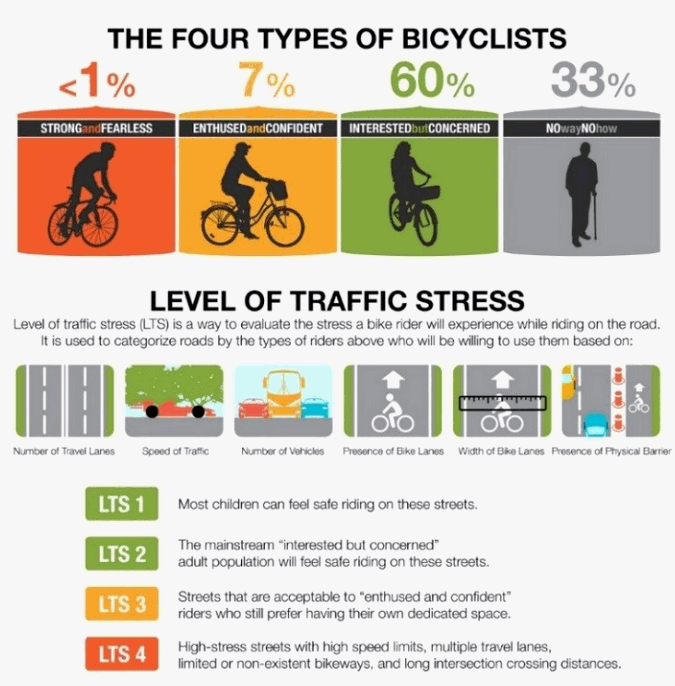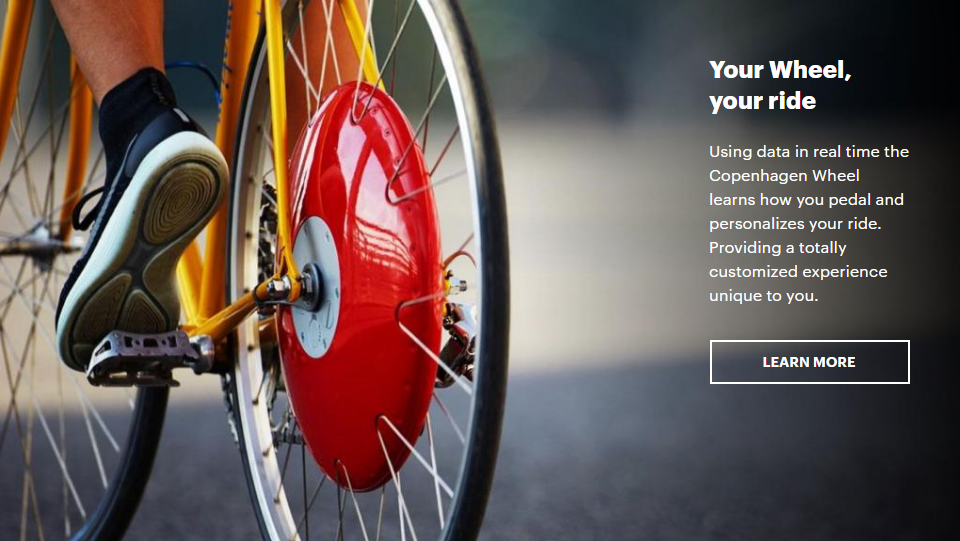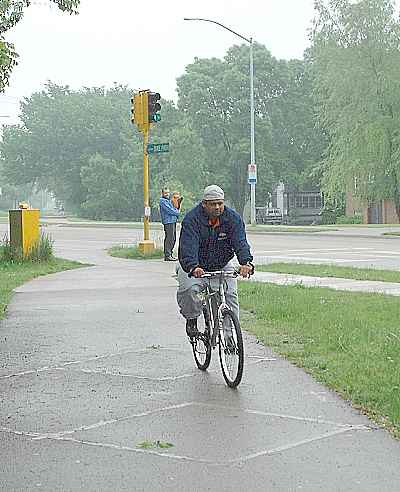Aligning characteristics which do not necessarily go with one another leads to a preordained conclusion and a stereotype. Examples: “red-headed and hot-tempered”; “male and sexist”; “dumb and blonde”. A respectable study would not lump characteristics together, but rather, describe each characteristic precisely and then study correlations between them.
Portland, Oregon bicycle coordinator Roger Geller’s four categories of cyclists each conflate two characteristics in this way: Strong and Fearless, Enthused and Confident, Interested but Concerned, No How, No Way.
Below is an illustration found on many Web sites, showing Geller’s categories. There are actually 16 categories, as each of the characteristics could be either present or absent. Comments are below the illustration.

* Fearless is not necessarily strong. This category perpetuates the myth of bicyclists’ success on the road depending on speed, and the spandex-clad road warrior. I am old and so, slow, but fearless because I am skillful. People who train for fitness (often indoors) but lack bike handling and road skills are fast and fearful.
* Badvocacy’s driving force is people who are enthused but not confident. Counterexample: my son learned how to operate in traffic on the back of our tandem, but now as an adult doesn’t choose to ride a bicycle — he is confident but not enthused. What he learned, though, serves him very well as a motorist.
* Interested but concerned: Many people are concerned and uninterested. They don’t ride bicycles and worry about my safety as I am about to ride away. Others are interested but unconcerned. They ride bicycles or have friends and family who do, and are not consumed by worry.
* No how: literally, can’t ride a bicycle because of a physical, sensory or mental impediment (so much for the idea of “all ages and abilities”). No way: — can’t afford to keep a bicycle, it was stolen etc. The two terms recited together are slang term which refers to aversion, but the illustration is of a man with a cane, who has an impediment (no way).
A study was conducted based on these conflated categories, to reach preordained conclusions.
I like to demonstrate and teach how cyclists can be confident, safe and fearless without necessarily being strong — that is my goal as a bicycling instructor.
Levels of traffic stress depend on skill level, not only on riding environment as indicated in the image below the four categories. And as been indicated elsewhere, comfort does not equate to safety with infrastructure that introduces hazards and creates a false sense of security. For example, width of bike lane is included in the list of factors in the illustration, but not dooring risk.




